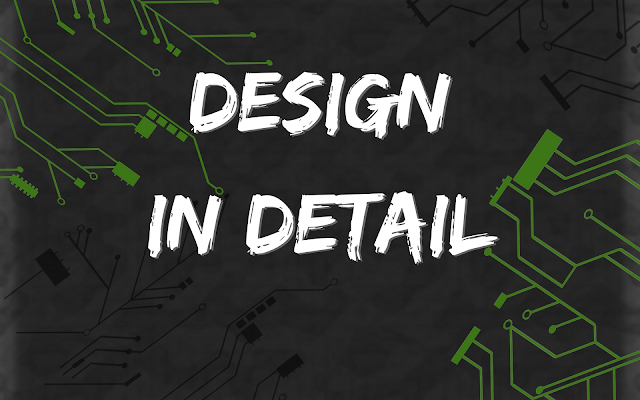How to Hear What Your Customers Really Mean
It may sound like a no-brainer, but you'd be amazed how quickly client interactions can go poorly just because you're not speaking the same language they are. Your customers are telling you what they want and need all the time... you just have to learn how to hear what they're saying. There's more to it than just listening - anyone can listen. It takes more effort to actually hear them.
In my years as a project manager, I developed an ideology for how to work with people to achieve the results that both you and they want. I called it the "L.E.S.S. is More" strategy, which stood for Listen, Empathize, Secure, and Satisfy. I know, it sounds like one of those cheesy business self help books, but it really works. Ultimately, all L.E.S.S. does is help you and your customer get on the same page, to ensure you're not working at cross purposes, and that nothing important is left out.
Let's run it down:
1. Listen
Again, it may seem silly to list this out, but it really is important to take the time to listen fully to what your client is telling you. Don't make assumptions, and don't jump to conclusions. Let them tell the whole story, and ask clarifying questions when necessary to make sure you understand what they mean.
2. Empathize
When speaking with clients, it's important to remember that they don't necessarily have the same experiences or perspectives as you do. Especially if you work in a technology field, there may be a major difference in computer proficiency or skill level, which can affect how they explain themselves. In order to ensure you understand them properly, it's often necessary to look at things from the clients perspective, taking your own knowledge and experience out of the equation. Something you know or assume may not be as obvious to them, so taking the time to verify their understanding of a feature or requirement is critical to successfully implementing a new process, program, or tool.
3. Secure
Once you've taken the time to map out everything that's required to complete the customer's request, and you know that you're not missing anything and that they understand what's involved, the next step is to secure their buy-in. Make sure you recap everything with the customer, in writing if possible, so you both have a solid plan to work from. This protects you in the event that they change their mind later, or forget a detail of the plan - it gives you something to refer back to. It also helps you make your own plans for development and implementation, without worry of forgetting anything. In addition, getting your customer to buy-in to a solution makes them more invested in the plan; their cooperation will make resolution easier, and making them feel like they are actively involved in the solution makes success more rewarding for them, which improves their feelings about your performance as well.
4. Satisfy
Finally, once you've laid out your plan and secured your client's buy-in, you must deliver on all of your promises. You must satisfy their requirements. This is where a lot of salesmen in big organizations get in trouble, making promises that their engineers can't actually deliver on, leading to unhappy and frustrated customers. Taking the time up front to go through everything in detail with your customer ensures you haven't agreed to something you can't deliver on. Refer back to your plan and ensure you check off all the items you are responsible for, and make those customers happy.
Conclusion
With these 4 steps, you can work through any customer interaction and ensure you have the tools and information you need to get the job done and satisfy the customer. Just remember - L.E.S.S. is More!
What strategies do you use when you're working with a customer to make sure you give them everything they need? Let us know in the comments! And be sure to check out my other blog entries for more tips and tricks. I post new articles every Monday and Thursday.
In my years as a project manager, I developed an ideology for how to work with people to achieve the results that both you and they want. I called it the "L.E.S.S. is More" strategy, which stood for Listen, Empathize, Secure, and Satisfy. I know, it sounds like one of those cheesy business self help books, but it really works. Ultimately, all L.E.S.S. does is help you and your customer get on the same page, to ensure you're not working at cross purposes, and that nothing important is left out.
Let's run it down:
1. Listen
Again, it may seem silly to list this out, but it really is important to take the time to listen fully to what your client is telling you. Don't make assumptions, and don't jump to conclusions. Let them tell the whole story, and ask clarifying questions when necessary to make sure you understand what they mean.
2. Empathize
When speaking with clients, it's important to remember that they don't necessarily have the same experiences or perspectives as you do. Especially if you work in a technology field, there may be a major difference in computer proficiency or skill level, which can affect how they explain themselves. In order to ensure you understand them properly, it's often necessary to look at things from the clients perspective, taking your own knowledge and experience out of the equation. Something you know or assume may not be as obvious to them, so taking the time to verify their understanding of a feature or requirement is critical to successfully implementing a new process, program, or tool.
3. Secure
Once you've taken the time to map out everything that's required to complete the customer's request, and you know that you're not missing anything and that they understand what's involved, the next step is to secure their buy-in. Make sure you recap everything with the customer, in writing if possible, so you both have a solid plan to work from. This protects you in the event that they change their mind later, or forget a detail of the plan - it gives you something to refer back to. It also helps you make your own plans for development and implementation, without worry of forgetting anything. In addition, getting your customer to buy-in to a solution makes them more invested in the plan; their cooperation will make resolution easier, and making them feel like they are actively involved in the solution makes success more rewarding for them, which improves their feelings about your performance as well.
4. Satisfy
Finally, once you've laid out your plan and secured your client's buy-in, you must deliver on all of your promises. You must satisfy their requirements. This is where a lot of salesmen in big organizations get in trouble, making promises that their engineers can't actually deliver on, leading to unhappy and frustrated customers. Taking the time up front to go through everything in detail with your customer ensures you haven't agreed to something you can't deliver on. Refer back to your plan and ensure you check off all the items you are responsible for, and make those customers happy.
Conclusion
With these 4 steps, you can work through any customer interaction and ensure you have the tools and information you need to get the job done and satisfy the customer. Just remember - L.E.S.S. is More!
What strategies do you use when you're working with a customer to make sure you give them everything they need? Let us know in the comments! And be sure to check out my other blog entries for more tips and tricks. I post new articles every Monday and Thursday.




Comments
Post a Comment